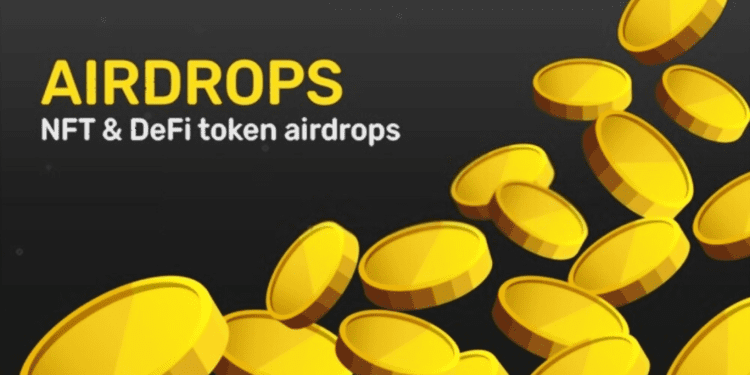Airdrops are promotional activities typically organized by blockchain-based projects to boost awareness of their tokens or NFT collection and increase ownership among holders.
Coined after physical airdrop- a type of airlift where items are delivered by aircraft without touching the ground- airdrops for crypto and NFT involve small amounts of the intended assets being sent to wallet addresses.
These wallets often belong to active community members and are given for free or in return for small tasks. The tasks range from referrals, retweeting posts, participating in raids, opening accounts, and more.
The goal of airdrops is to increase engagement with the project and reach a broader audience to get more people to invest in their cryptos or NFTs.
How Do Airdrops Work?
With the abundance of projects fighting for recognition and the commonness of current utilities in the crypto market, startups are always looking for ways to gain an edge.
These blockchain-based businesses promote airdrops on their social media platforms, forums, and websites by offering their coins or tokens to recipients without financial obligations.
After establishing the need to conduct airdrops, the next step is to decide the qualifications necessary to participate and how they will be made available. Here are some to determine who gets airdrops and how they get them-
- Have users follow the project’s official social media accounts or legitimate affiliate accounts.
- Distribute tokens or NFTs to holders with a certain quantity of the particular asset.
- Award users based on contributions to the project. It could be found in the number of assets acquired over time, transactional activities, or other non-asset gifts.
- Taking a blockchain snapshot at a previous date to ascertain specific criteria and letting users claim their airdrop tokens from the project’s website.
Types of Airdrops
The type of airdrop conducted is related to the crypto project, and as such, several options can be chosen as the proper marketing and awareness tool.
Standard Airdrops
For standard airdrops, users are not required to perform any tasks to gain eligibility. All that is needed is to create an account and have a digital wallet to receive the crypto or NFT.
Because there are no criteria attached, this type of airdrop has a limited amount of assets that can be given and a specific number that each user can receive.
Bounty Airdrops
Blockchain-based projects choosing bounty airdrops often put on the ground specific tasks for participants to perform. The tasks have points attached, and users must rack up several points to qualify for the airdrop.
The tasks often entail increasing awareness through referrals, retweeting and sharing posts about the project, signing up for an app or newsletter, and joining communities.
Holder Airdrops
Some projects might decide to fork, and one way to get more people to follow the forked result is through Holder airdrops.
It occurs based on who is already holding the tokens or coins and the quantity they have in their wallet. Since blockchain has made it easy to view wallets and transactions, this type of airdrop is usually automatic.
There are also exclusive airdrops, where selection is based on other factors like; how long an individual has been with the project, the number of posts about the project on their personal social media page, and so on.
Airdrop Phishing and Dusting Attack
Since crypto airdrops are popular, they are also a clever way for hackers to gain access to users’ accounts and steal funds.
Dusting attack is a new type of malicious activity where scammers send a tiny, unnoticeable amount of crypto to wallets with links to malicious websites attached to the transaction memo.
Some airdrops will prompt users to download certain wallet services and connect their wallets. Once the unsuspecting participant inputs their secret phrase, the scam is complete.
It is important to note that airdrops are supposed to be free, so no investment is required other than activities directly related to the project.
How To Avoid Airdrop Scams
The best way to avoid airdrop scams is to be careful about which extension (dApp) you’re connecting to, scrutinize permission requested by external links and wallet services, and make sure you are always on the right site.
These projects publicly communicate airdrops and other promotions; following them is the best way to keep in touch with recent news, in case there is any information you should know.
Most importantly, do your research. Make sure the project you’re accepting crypto airdrops from is legitimate. Some forums discuss new projects, and hopping in once in a while to ask questions is an excellent way to stay vigilant.














